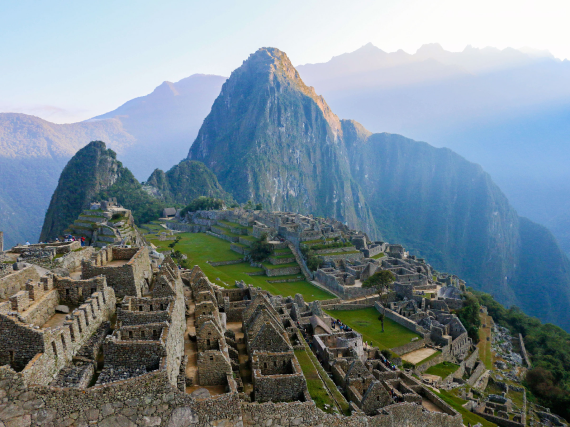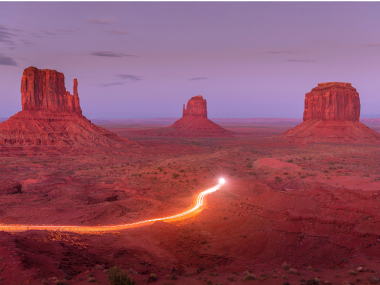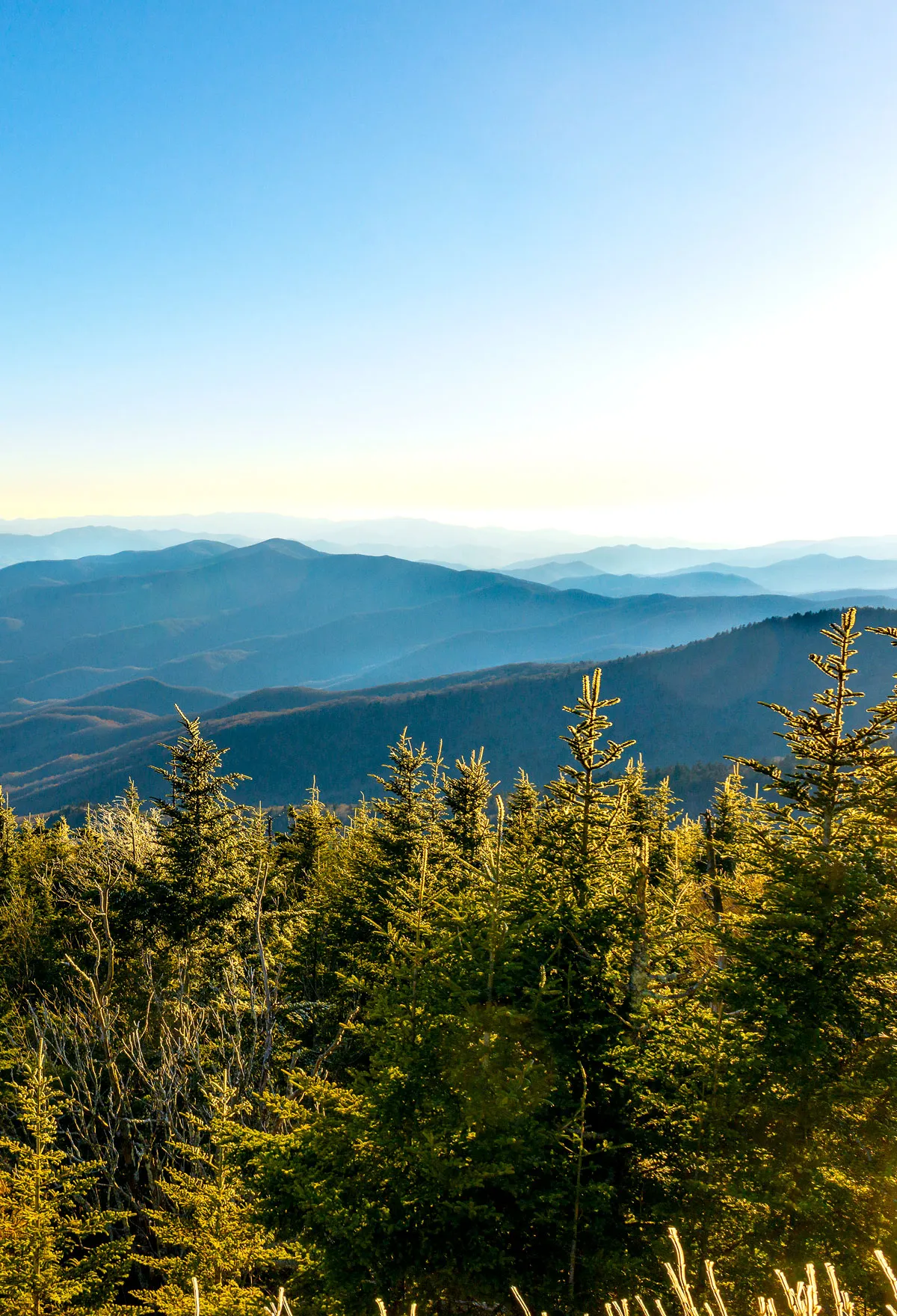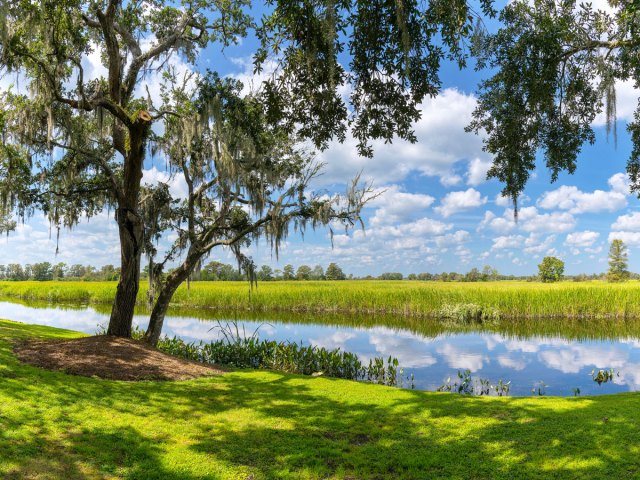The American Southeast may not attract as much fanfare as, say, the national parks of the Southwest or the beautiful coastlines of the Pacific Northwest, but this corner of the United States is home to an array of incredible, often underrated natural wonders waiting to be discovered. From America’s deepest underground waterfall to the oldest live oak east of the Mississippi, here are nine of the most beautiful sites to visit in the Southeast.
Congaree National Park – South Carolina
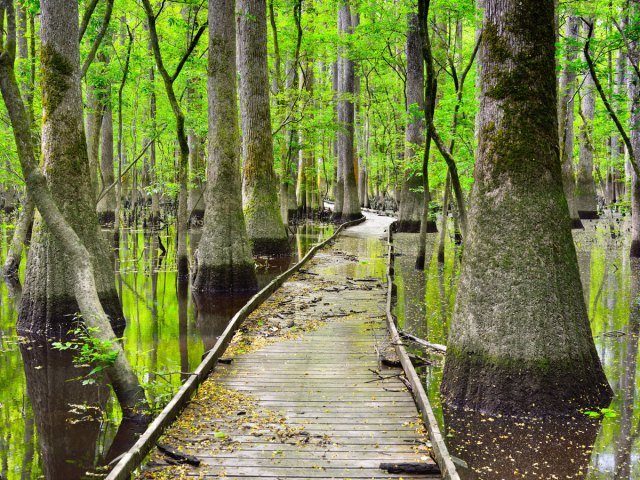
South Carolina’s only national park, Congaree features one of the world’s tallest temperate and hardwood forests, with some native loblolly pines towering as high as 170 feet. Long before Congaree’s authorization as a national monument in 1976 and redesignation as a national park in 2003, the site’s floodplain was an important source of natural resources for the native Congaree population, and it later served as a haven for escaped enslaved persons. Today, the sanctuary sits 18 miles outside of the state capital of Columbia, which provides a stark contrast to Congaree’s forest of 500-year-old cypress trees.
The park is home to countless hiking trails, including a popular 2.6-mile boardwalk loop. Canoe rides are a popular activity along the slow-moving Cedar Creek, but perhaps no event is more popular at Congaree than the annual synchronous firefly viewing, which occurs for two weeks between May and June each year. Visitors can gaze at millions of fireflies in search of their mates, and their glowing throughout the sky creates a natural light show unlike any other.
Jekyll Island – Georgia
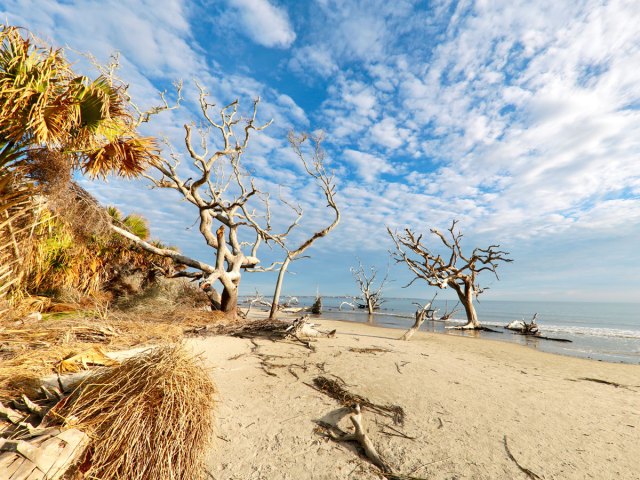
Among Georgia’s Golden Isles — four barrier islands about an hour’s drive south of Savannah — there is much to distinguish Jekyll Island, the southernmost of the group. Not even 10 square miles in size, this windswept Atlantic enclave has witnessed everything from the birth of the Federal Reserve System (a secret meeting among the nation’s top bankers and politicians at the Jekyll Island Club during the Panic of 1910-1911 laid the system’s foundations) to the death of many a zombie (the cult favorite Walking Dead has repeatedly filmed on Jekyll Island’s Driftwood Beach, among other local spots).
While there are plenty of evocative historic sights to visit around Jekyll Island, arguably the best use of your time here is to roam the 1,000-plus acres of maritime forest, where paths for humans intersect with those marked with, say, terrapin-crossing signs.
Everglades National Park – Florida
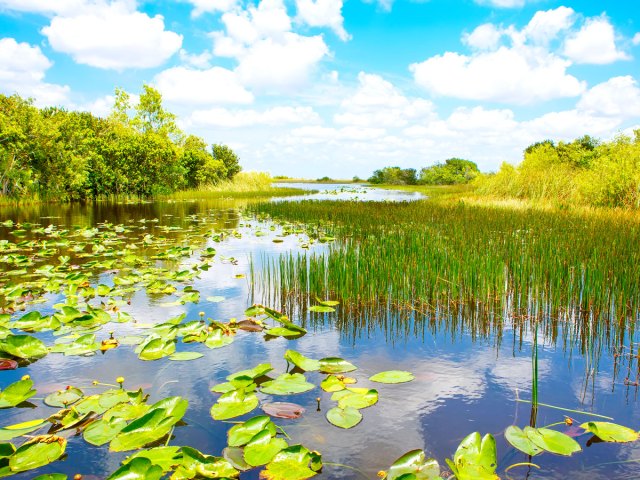
As one of Florida’s crown jewels, the Everglades is the largest remaining subtropical wilderness in the United States. This breathtaking expanse at the southern tip of Florida covers 1.5 million acres and includes wetlands, mangrove forests, and sawgrass marshes that house rare and exotic species.
Early land developers once concluded the land was worthless and attempted to drain it, but we have environmentalist Marjory Stoneman Douglas to thank for championing the crusade to “Save the Everglades.” The site became a national park in 1947; in 1979, it was recognized as UNESCO World Heritage Site, with the agency aptly describing it as “a river of grass flowing imperceptibly from the hinterland into the sea.”
Great Smoky Mountains National Park – North Carolina and Tennessee
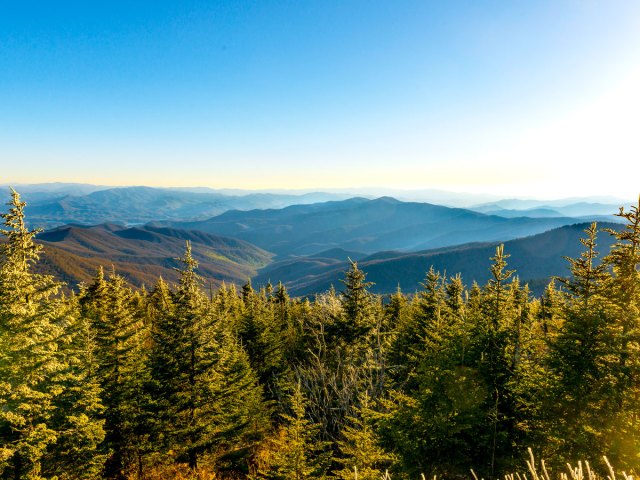
While Yellowstone may be the oldest U.S. national park and Wrangell-St. Elias in Alaska may be the largest, neither can match the biodiversity of Great Smoky Mountains National Park. During the last ice age, many species migrated to the Great Smoky Mountains, one of the world’s oldest mountain ranges, created an estimated 200 to 300 million years ago. The variety and number of living organisms — from plants and animals to fungi — is greater than any other U.S. national park. Located in the Southern Appalachian Mountains, the park covers 800 square miles and is believed to hold some 100,000 species — and only 19,000 of them have been documented.
Established in 1934, Great Smoky Mountains National Park is also the most-visited national park in the nation, attracting over 12 million visitors in 2024. The park’s highest point, Clingmans Dome, reaches 6,643 feet above sea level and is also the highest point in the state of Tennessee. It is the third-highest peak east of the Mississippi ,with only two mountains in North Carolina reaching greater heights. On clear days, views from the top extend for 100 miles or so, making it a popular hiking destination.
Ruby Falls – Tennessee
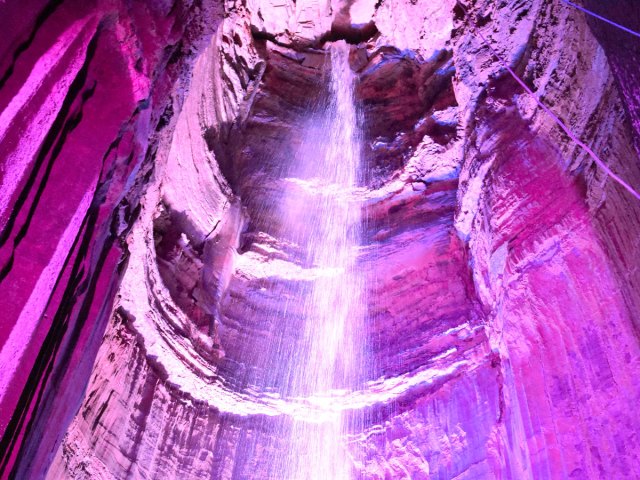
Hidden deep within the 2,388-foot-tall Lookout Mountain in Tennessee’s Cumberland Plateau is Ruby Falls — America’s largest and deepest publicly accessible waterfall. More than 1,100 feet below the mountain’s surface, the 145-foot falls are part of a watershed that includes streams, snowmelt, rainfall, and irrigation runoff, so water flow varies dramatically throughout the year. Tours operate daily via a glass elevator that descends 260 feet into the cavern, with colored lights illuminating the falls.
If you visit, don’t miss what’s above ground, either — from the summit of Lookout Mountain, you can see seven states at once: Tennessee, Georgia, Alabama, North Carolina, South Carolina, Kentucky, and Virginia.
Dismals Canyon – Alabama

During the spring and fall, northwest Alabama’s Dismals Canyon sometimes appears to be filled with glowing stars. But the blue-green sparkles are actually bioluminescent larvae of the North American fly species Orfelia fultoni. The insects are cousins of the carnivorous fungus gnats that light up the spectacular glowworm caves of New Zealand. In Alabama, they are known as Dismalites. The creatures produce the lights via a chemical reaction, and use the glow to attract flying insects into a sticky trap.
Angel Oak – South Carolina
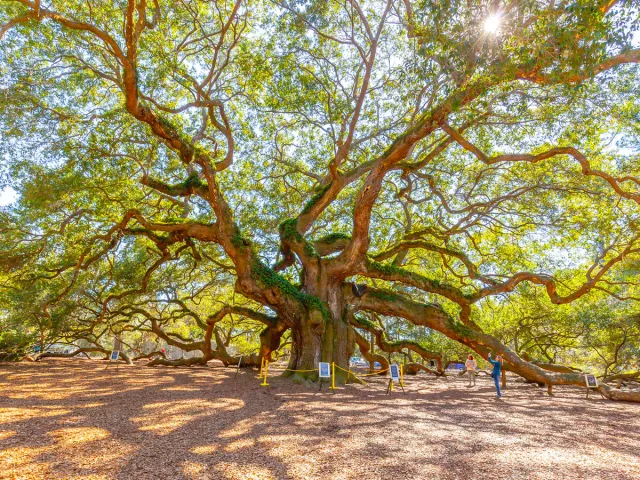
As you’d expect from any living organism, this iconic live oak on South Carolina’s Johns Island comes with ever-evolving stats. Height? Close to 65 feet. Circumference? Probably somewhere between 26 and 28 feet (especially impressive when you consider that these sprawling branches, some of which dip into and reemerge from the ground, shade a reported 17,000 square feet). But age? Well, that’s where the tree is shrouded in mystery as much as leafy splendor.
While Angel Oak is believed by some to be the oldest live oak east of the Mississippi, no one’s sure how old the tree actually is. Estimates range from 300 to more than 1,000 years. Still, whether this is the region’s oldest live oak, or one of several old-timers, its place in the heart of the Lowcountry is unquestionable: This botanical wonder draws around 400,000 visitors annually to its eponymous park.
Luray Caverns – Virginia
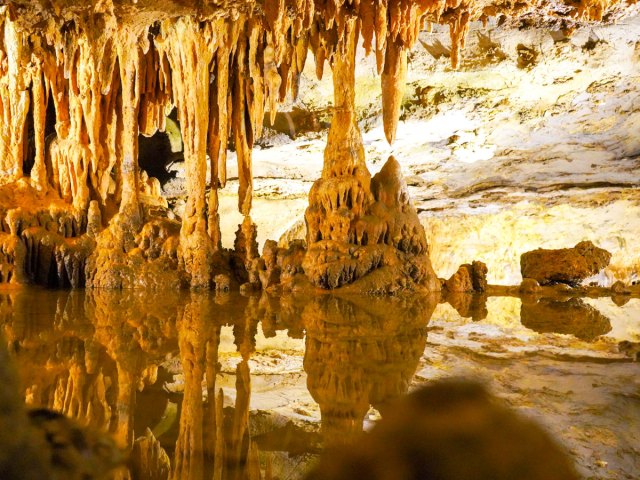
There are over 4,000 caves in Virginia, but most are on private property and difficult to explore (unless you’re a trained spelunker). Fortunately, the spectacular Luray Caverns do not fall into that category. Spanning 60 acres and reaching 10 stories tall, the largest cave complex in the eastern United States is open to the public, with ample lighting and paved pathways for accessibility.
This massive system of limestone and clay caverns was carved by an ancient sea and features stalactites, stalagmites, and other beguiling formations. The cave was long known to Native Americans in the area, but in 1878 a group of local settlers found it, hoping to turn it into a tourist attraction. Each year, millions of visitors come to explore its natural wonders, from the 500-foot-tall column Pluto’s Ghost to Dream Lake, a still pool reflecting the stalactites above, and the Cathedral — a soaring space featuring an electric organ installed in the 1950s that is considered the world’s largest musical instrument.
Providence Canyon State Park – Georgia
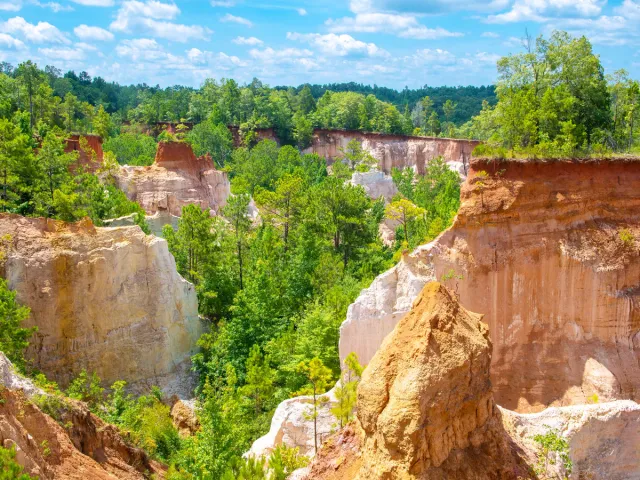
The Grand Canyon in Arizona and other notable canyons around the world were slowly carved by water and wind over the course of thousands of years. But Georgia’s “Little Grand Canyon” came about much more quickly.
In the 1800s, poor agricultural practices led to the erosion of topsoil and clay, creating gullies four feet deep within 20 years. The canyon near the Georgia-Alabama border continues to grow each year, and today it is about 150 feet deep and 350 feet wide. Visitors come from far and wide to photograph the colorful layers of the canyon walls. Its official name is Providence Canyon, named for Providence Methodist Church, which the canyon swallowed in the 1800s.
More from our network
Daily Passport is part of Inbox Studio, which publishes content that uplifts, informs, and inspires.

